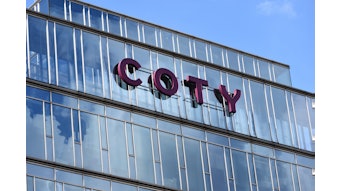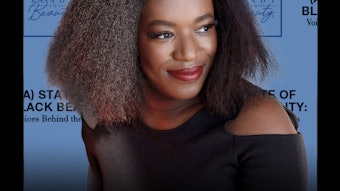- Subscription sampling services are everywhere lately, offering a new way for beauty products to get into the hand of curious consumers—and for marketers to get the word out about their products.
- Manage your expectations for sampling partnerships. A direct dollars ROI shouldn’t be your only measure of success.
- With the variety of subscription services available, take the time to investigate and find the one that best fits your brand’s needs.
- Take advantage of additional opportunities subscription sampling companies offer as well, such as events and mailing offerings.
Subscription boxes are undeniably hot, with established boxes raising millions in funding and new boxes for everything from tampons (LeParcel) to razor blades (Dollar Shave Club) launching weekly. The beauty industry has a crop of established and emerging sample box companies that promise to get products into the hands of your target consumer, yet many brands are left unsure of which box to choose or how to see a return on their investment.
With concerns ranging from large numbers of product needed (Birchbox has upward of 100,000 paid subscribers) to little control over direct sales and customer data in the hands of another company, it can seem easier to skip subscription boxes in favor of more traditional marketing strategies. But by being proactive in selecting the right box, being flexible when it comes to objectives and optimizing ancillary opportunities, brands can see success through this marketing channel that’s not showing signs of stopping.
Know What Sampling Is—and Isn’t
When participating in a sampling program, the first requirement for success is having realistic expectations and clear objectives. Being included in a subscription box doesn’t always yield a direct 1:1 ROI, or even a breakeven for the investment in sample sized inventory and shipping costs. Savvy brands rely on subscription boxes for more brand awareness and market research purposes than to see a marked uptick in sales.
Mindy Arnett, social media manager at bH Cosmetics, is a veteran of placing products in subscription boxes, such as ipsy’s Glam Bag and Beauty Army. “ipsy has 200,000 members, and to get a sample into 200,000 hands builds great awareness,” says Arnett.
When evaluating the best subscription boxes for your brand’s goals, don’t overlook their total reach outside of members or subscribers. Subscription box programs reach more than just those who receive the monthly delivery—they also have social media followers, those in their e-mail database and new prospects who learn of the brand through traditional media.
Knowing when to sample is also important. Design Essentials, an Atlanta-based hair care manufacturer, has filters for determining its sampling criteria. “We’ll partner with a subscription box to introduce an existing product to a core customer base, for example, to make a group of customers aware of a certain product to achieve a specific style for that specific texture,” says director of marketing Tracey Gibson. “Also, we use sampling to garner immediate trial for new product launches and to highlight a specific product with an associated announcement, such as editor’s awards.”
In terms of measurables, consultant Cindy Johnson of Sampling Effectiveness Advisors offers benchmarks gleaned from her days as corporate product sampling manager with P&G. “Most retail brands will have trial results of 70–80%, with purchase conversion averaging 6–12%,” she says.
Right Box, Right Customer
One unique advantage sampling programs offer is their targeted collection of buyers. With boxes centered exclusively around a specific category of products, brands are able to get their products into the hands of consumers most interested in receiving them [Read “It’s All About Me” for more on the importance of the getting the right message to the right consumer].
When selecting your subscription box, be sure to first select a partner that reaches key audiences for your brand. Hair care brand Ouidad was well known in the general mass market curly hair niche, but less so in the African-American demographic. They learned about curlBOX, a subscription box for women of color with curly hair and a huge social media following. “The great thing with curlBOX is we know we’re speaking to that tighter-curled customer because that’s the majority of their database,” says Adama Sesay, assistant manager of digital content and commerce for Ouidad. “Certain products we’ve come out with in the last couple years are specifically for that curl type, so we naturally would send those samples there and know we’re hitting the nail on the head with that segment.”
Lean on the subscription box services to detail their consumer’s match with your brand’s ideal customer personas. “The Glossybox woman is well-traveled, well-educated and has $100 or more a month of discretionary income to spend on beauty,” says Corey Huggins, former head of brand management for Glossybox, and now executive president and chief marketing officer for another subscription sampling program, My Brown Box. “She likes going to department stores and prestige boutiques as well as apothecaries. She mixes mass with class.”
Consider the price point of a box and whether its target market will support your product’s suggested retail price—like Glossybox’s $21 per month compared to the $10 per month for a Glam Bag.
Package and Position Your Product for Success
Once you’ve selected the right subscription box to partner with, you can’t just sit back and wait for reviews and revenue to roll in. Even though subscription boxes significantly reduce the noise in your consumer’s mind by narrowing their product experience to five to 10 brands, there’s still in-box competition. Unless your box promises exclusivity of product categories, you may be competing with other brands in a similar space. The same rules apply from your other marketing efforts. Repeated exposure within a box will move your brand to top of mind for subscribers. “She prefers having a two to three sampling experience with beauty products before she makes a decision,” says Huggins of the Glossybox subscriber.
Accompany your sample with “silent salesmen” such as collateral cards, boxes that give more real estate for copy, and hang tags that speak directly to the subscriber who doesn’t have the benefit of an ad or a POP display for context.
“Do an information card with the product; subscribers want that extra step,” says Myleik Teele, founder and CEO of curlBOX. “They want to know, ‘How do I use what you’re sending me?’ Brands that have done well have included collateral in the box.”
Also, selecting the right type of product and even the amount can cause your sample to stand out. For example, curlBOX actually accepts full-sized products for inclusion—a must for its demographic of women with lots of thick, dense hair who won’t be able to receive the full sampling experience from a 0.05 ounce packet of product.
Other factors, such as the time of year (for summer and winter, skin care does well) and whether a product delivers immediate trial payoff (color cosmetics vs. anti-aging products) should be taken into consideration for when your product is sampled.
Step Outside the Box
Beyond delivering products to your ideal consumers, many subscription boxes offer additional branded experiences. The requisite mix of social media promos, solo e-mail blasts and product giveaways should come standard with your partnership. If you’re looking for more experiential interaction, which will allow you to directly touch the box’s consumers and press contacts, consider partnering on special events and limited-edition box opportunities that could generate premium media placement that lives on beyond your featured month.
“Events were massively successful for us,” says Sesay, who has partnered with curlBOX to do events for members. “We were able to put our New York flagship salon on the map in the natural hair community and foster a lot of new relationships with social media influencers and beauty editors.”
Glossybox’s Glossy Get Togethers are a draw for highly vocal beauty lovers, and its coveted limited edition and bespoke boxes often end up in the hands of top style and beauty influencers, editors and entertainers.
Of course, don’t neglect to do your own promotion of your partnership as well. From press releases to giveaways of box memberships to sneak peeks of your featured product on social media, get creative with promoting the exclusive partnership with your chosen subscription box.
Measure Your Momentum
Although it may not be realistic to see a direct ROI from your sampling program in sales, you can still reap useful insight for your own market research. Make sure to use tracking data points, such as a special coupon code tied to the box and the month, to measure purchase conversion. If the subscription box offers an e-commerce aspect to its program (like Birchbox), it should be able to provide you with a full sales analysis.
Most importantly, avail yourself of the market research potential of a targeted group of potential customers that subscription boxes offer. Many boxes conduct post-sample polls, which may be customized to meet your evaluation criteria without the hefty price tag of a professional market research survey. In your analysis, measure not just sales, but the overall impact sampling has on your brand.
“Look at the awareness and level of engagement,” says Huggins. “We represent brands much like a music rep will ‘break’ an artist. As their beauty partner, we’re there to service them and help them along the way.”
Navigating the abundance of subscription box choices for your beauty brand need not be challenging with the right expectations and partner. Rather than a new commerce model, subscription boxes are simply another marketing channel with the timeless aim of driving awareness of your brand in the mind of your ideal consumer. “If you find the right box,” says Arnett, “you’re getting your product in the right hands.”
Toni V. Martin is a consultant to beauty brands and the director of The International Association of Beauty Brands (IABB), a trade organization that provides sales, marketing, public relations and branding education and training to hair, body, skin care and color cosmetics companies. Her editorial contributions have appeared in magazines such as Allure and Spa, and she is a frequent speaker on brand building in the beauty industry. [email protected]; www.theiabb.com










